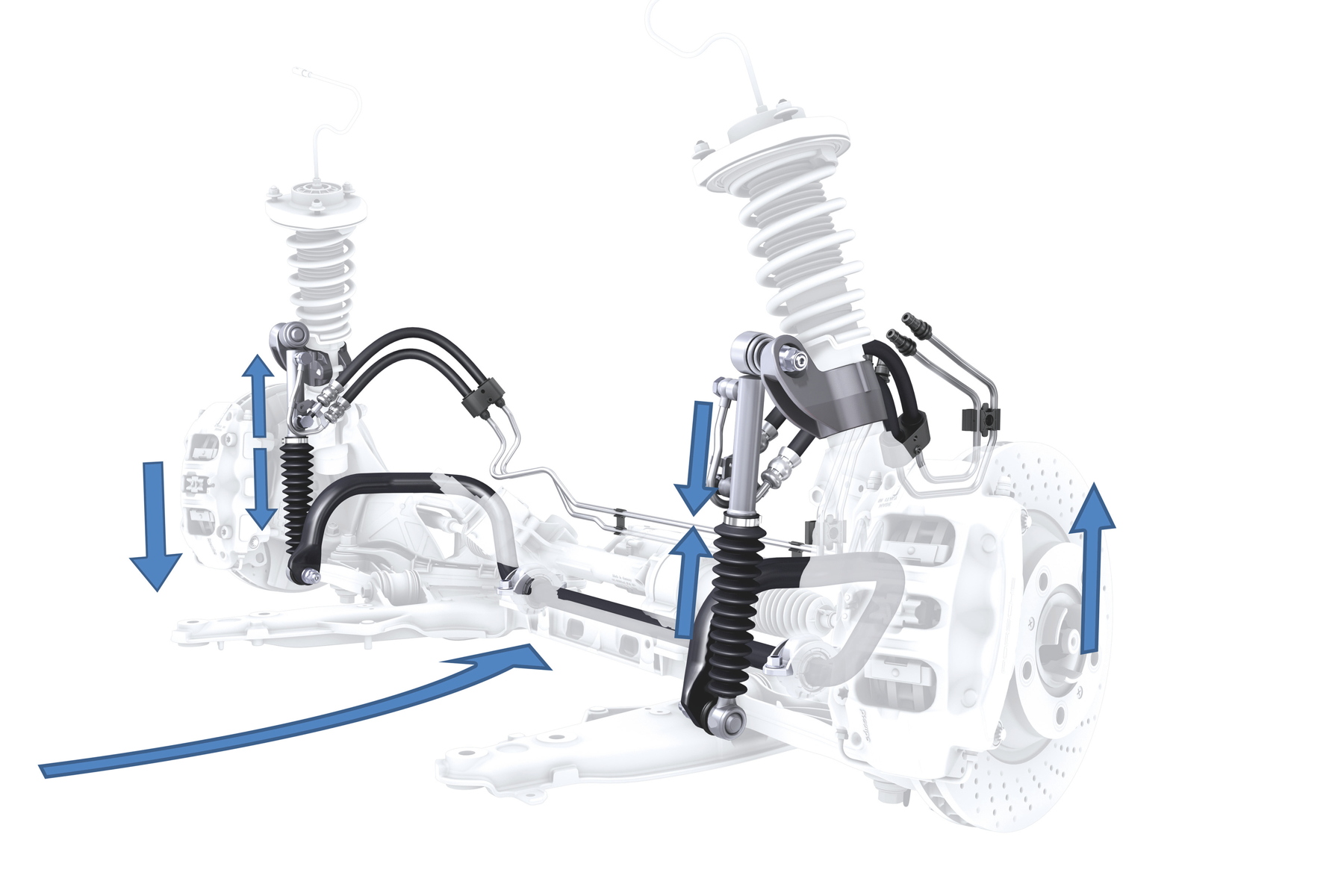Technology explained: Porsche Dynamic Chassis Control
When cornering, all cars roll towards their outside wheels. This means that the loads experienced by each tyre are no longer even, as the inside edge ‘goes light’.
In order to achieve a greater equilibrium between all four contact patches, Porsche has developed an electrohydraulic antiroll bar system, resulting in more responsive handling when driving your 911 on the limit.
Rather than using normal links between the dampers and the antiroll bar, PDCC uses hydraulically actuated cylinders to mechanically alter the load on both the front and rear antiroll bars.
Sensors connected to each damper measure the movement under both bump and rebound. These measurements are then used to determine how to load both antiroll bars.
At each corner of the car, the cylinders move in the opposite direction to the dampers (pushing the antiroll bar under bump, and pulling during rebound). This optimises the camber of each wheel, as well as ensuring that the ideal amount of load is transferred from wheel to wheel when turning the corner.
All of this results in a more direct turn in, while ensuring that the car feels more stable during cornering.
As part of our ‘Technology explained’ series, you can also find out how Porsche Carbon Ceramic Brakes improve your stopping power, why Porsche Active Suspension Management improves stability, and what Porsche Traction Management really does.


Comments (0)